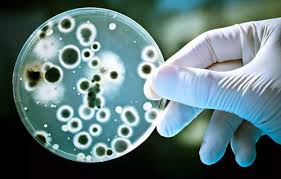AI-Powered Discovery in the Fight Against Drug-Resistant Bacteria
In a groundbreaking study published in Nature, MIT researchers have harnessed the power of deep learning, a type of artificial intelligence, to find new compounds capable of defeating a formidable enemy: methicillin-resistant Staphylococcus aureus (MRSA). Responsible for more than 10,000 deaths annually in the United States, MRSA is a tough bacterium, often resistant to multiple antibiotics.

The MIT team, led by James Collins, a professor at the Institute for Medical Engineering and Science, has identified several compounds with potent activity against MRSA. Remarkably, these compounds demonstrate low toxicity against human cells, making them promising candidates for future drugs. This discovery comes as a part of the Antibiotics-AI Project at MIT, aiming to discover new antibiotic classes against various deadly bacteria over seven years.
Unveiling the “Black Box” of AI in Drug Discovery
One of the unique aspects of this study is the team’s ability to decipher how the deep-learning model makes its antibiotic potency predictions. Traditional AI models in drug discovery often work as “black boxes” – their reasoning and internal processes remain unknown. However, by adapting an algorithm known as Monte Carlo tree search, used in other AI systems like AlphaGo, the MIT researchers made their model’s predictions more explainable.
They trained the model with an expanded dataset of about 39,000 compounds, testing each for antibiotic activity against MRSA. By feeding the model information on the chemical structures of these compounds and their antibacterial properties, the team enabled it to predict the likelihood of any new molecule being an effective antibiotic.
The real breakthrough came when the model identified specific molecular substructures responsible for the antimicrobial activity. This insight is crucial as it guides researchers in designing more effective antibiotics.
Using a suite of models, the researchers screened around 12 million commercially available compounds, pinpointing several promising classes that showed activity against MRSA. Lab tests and subsequent experiments in two mouse models of MRSA infection confirmed the efficacy of these compounds. They appear to work by disrupting the bacterium’s ability to maintain its critical electrochemical gradient across cell membranes.
This discovery opens up new avenues in the fight against antibiotic-resistant bacteria. The researchers have already shared their findings with Phare Bio, a nonprofit associated with the Antibiotics-AI Project, for further exploration of these compounds’ clinical potential. Additionally, the MIT team is now focusing on designing more drug candidates and extending their models to target other types of bacteria.
The success of this study represents a significant step forward in antibiotic discovery, showcasing the immense potential of AI in medical research. It’s not just about finding new drugs but understanding how and why they work, paving the way for more targeted and effective treatments against the ever-growing threat of drug-resistant bacteria.